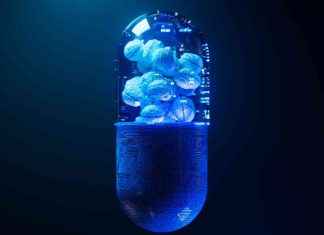CLEVELAND, Ohio – Hector Castro remembers the first time he became an “upstander.”
That term is a common one at Cleveland’s unique Facing History New Tech High School. The school, one of the district’s specialized choice high schools, skips the lectures that dominate most high school classrooms for group projects, a lot of online work and a strong focus on political and social issues.
It draws its curriculum from the national Facing History and Ourselves model that uses the Holocaust and other historical events to show students, “the essential connection between history and the moral choices they confront in their own lives.”
“Our mission is to engage students of diverse backgrounds in an examination of racism, prejudice, and anti-semitism in order to promote the development of a more humane and informed citizenry,” the national website for Facing History and Ourselves adds.
The school is just one of several specialized high schools that the Cleveland school district has started to give students and families more school choices.
On Wednesday, we showed you the new School of Science and Health, based at MetroHealth Medical Center.
Tomorrow, check back for a look at the High School for the Digital Arts.
It’s a school where pictures and quotes from Gandhi, Martin Luther King or Elie Wiesel are everywhere. It’s a school where students have debates in class over whether guns should be allowed on college campuses and where Spanish classes feature a movie about Che Guevara.
Along with helping students understand how their own backgrounds shape them, then teaching how to see events through the eyes of others, a major goal of the school in having students stand up for their beliefs and making the transition from “bystander” to “upstander.”
Teacher Martha Verde, who helped plan the school before it started in 2012, said the school stresses taking action so much that all school t-shirts say “I will make a difference” on the back. And seniors have to do a final project that makes a difference in the community, with at least 20 hours of service work.
“It’s a big part of what we are,” Verde said.
For Castro, a 10th grader, that shift happened outside of school.
He remembers riding an RTA bus to school one day with classmates when they saw a man ordering his girlfriend around and grabbing her roughly by the arm.
In the past, he said, “I probably would have said this is none of my business.”
But his school had already taught him that sitting quietly by only lets bad behaviors and trends continue. So the students approached the man as a group.
“We came up to the guy and told him, ‘Don’t do that to her’,” he remembers. The man got off the bus at the next stop, leaving the woman to herself.
“It makes me feel good,” Castro said. “You’re helping someone else and you’re dong the right thing.”
Others say the philosophy of the school makes it a safe place for them, regardless of their background. Teachers said the school has a high percentage of lesbian, gay bisexual or transexual students and other students who just appreciate the school seriously enforcing its no-bullying policy.
“It’s accepting to you, no matter who you are and what you do,” said sophomore Nayeliz Nieves.
The school also bases its discipline on a “restorative justice” approach, rather than punishment. When disputes happen, teachers or Principal Mark Engoglia forces students to talk about their differences.
“Suspensions don’t work,” Engoglia said, so he won’t use that hammer unless a student is violent.
“Yelling and screaming doesn’t work.” He said. “What works is conversations. What works is accountability. What works is making kids think about their actions.”
Though the school is the only one in the district using the Facing History curriculum, several are using the national New Tech model of basing most lessons around projects, working in groups and doing work mostly on computers.
Each student at the school has their own laptop and uses materials saved online, rarely any textbooks.
The district has separate New Tech schools on both the East and West sides of the city and Collinwood High School is using the model in all its classes now. An attempt to make it part on Lincoln-West High School on the near West Side failed.
The model is having mixed results in the other schools. Its too early to see any trend in Collinwood, but test scores at New Tech East have bounced around, both up and down, compared to the state averages in the last few years while New Tech West has steadily declined.
Facing History New Tech has also seen its scores fall, relative to state averages the last few years.
Engoglia, though, says the school is succeeding. It started with 44 students in 2016 and 38 of them graduated last spring as its first graduating class. All but two of them, he said, were accepted into at least one college.
And he said all of the schools gains are not measure on tests.
“Yes, we’re worried about state tests and graduation rates, but, if you’re looking for a school that’s going to grow you as a person, we are more focused on that piece.”
Our editors found this article on this site using Google and regenerated it for our readers.





